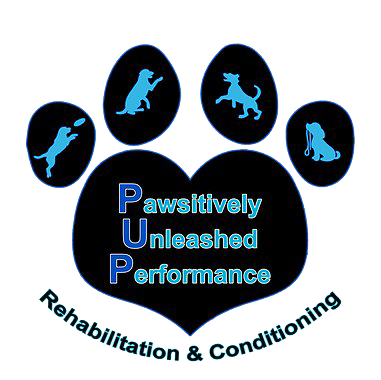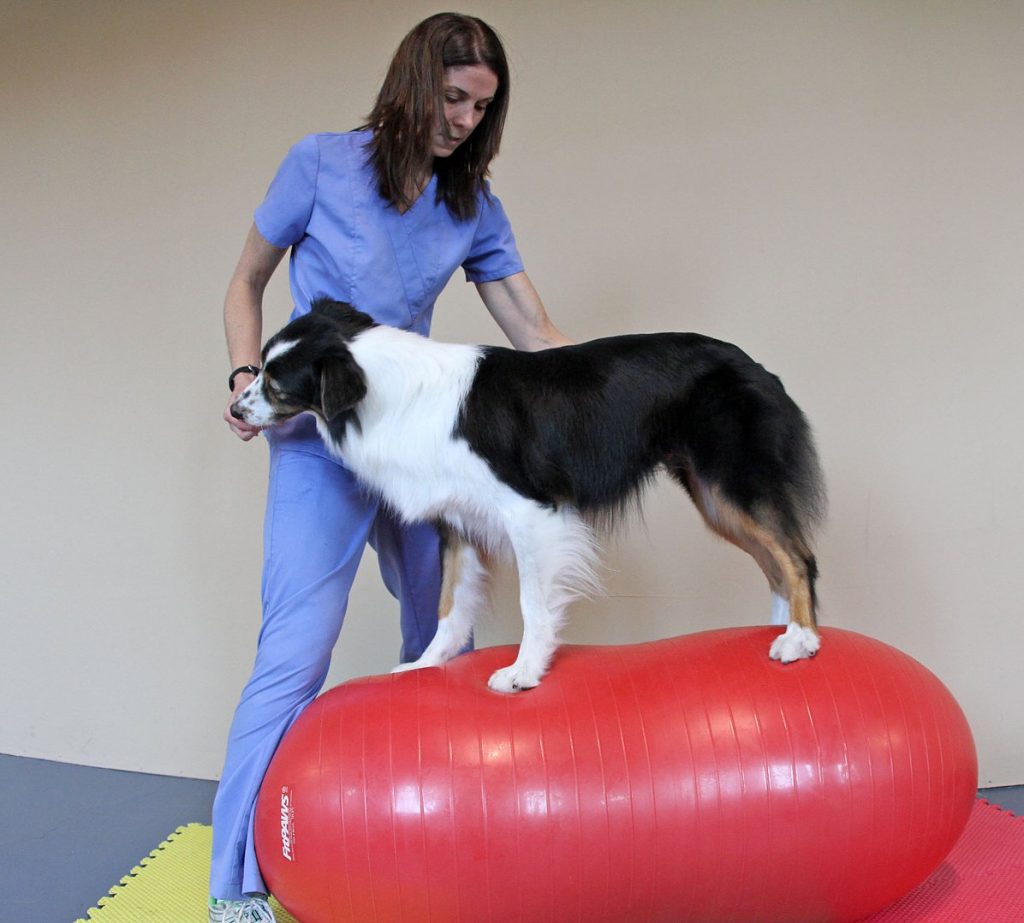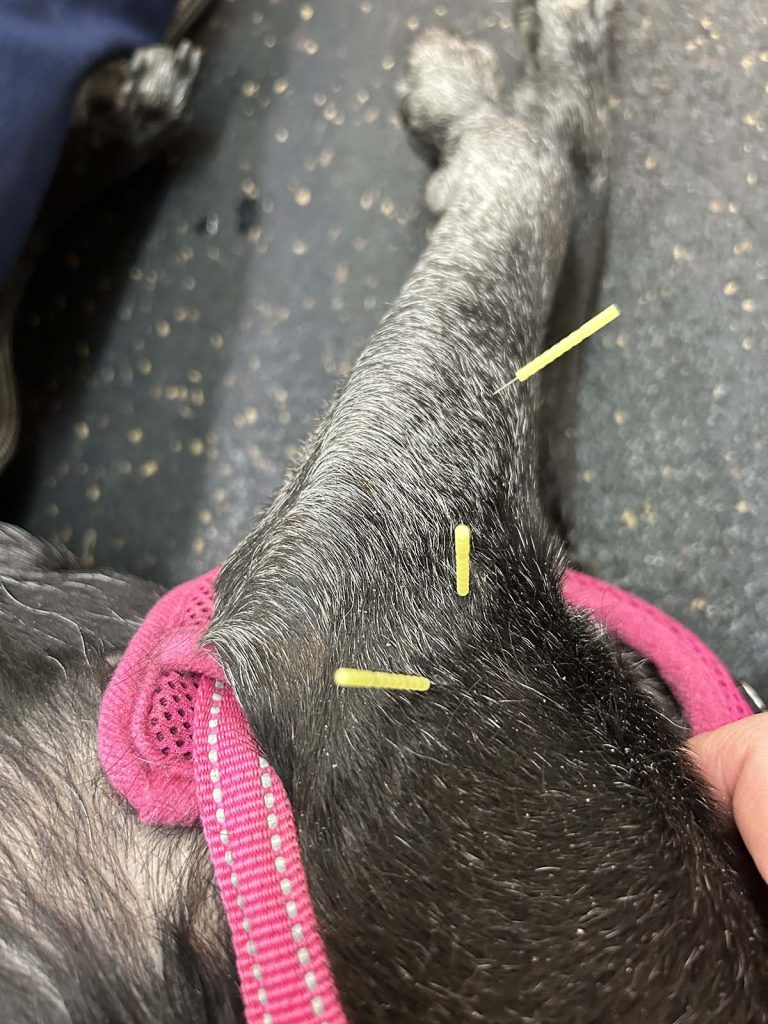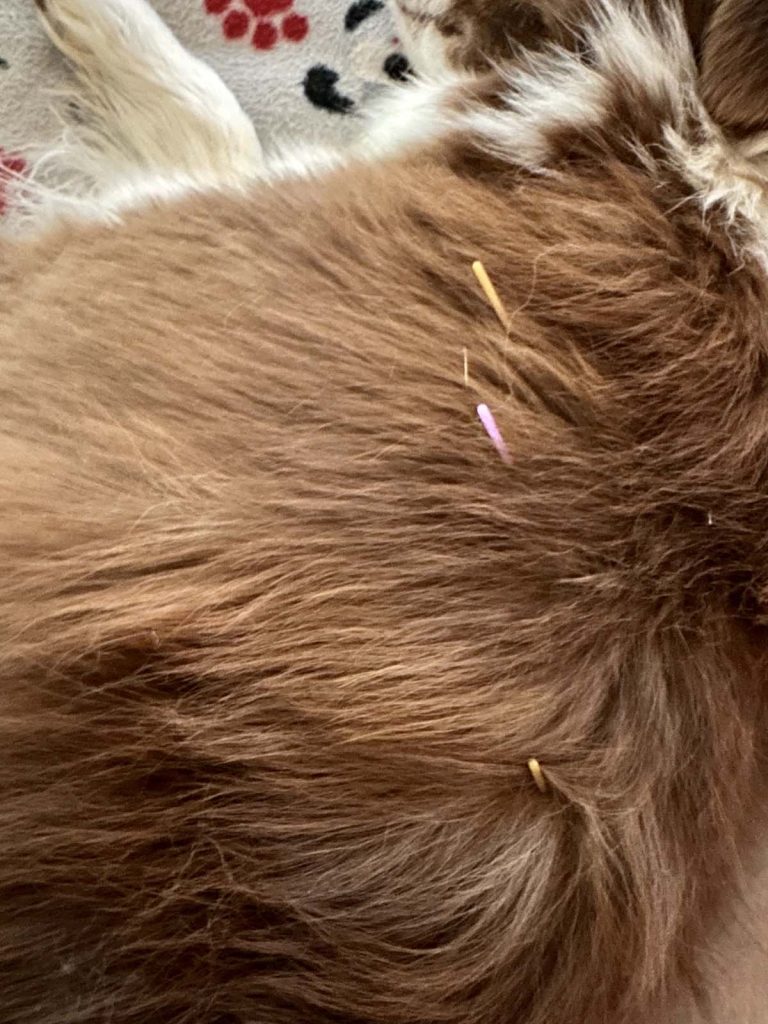
“Our specialty is helping SENIOR DOGS improve their INDEPENDENCE in their daily lives, so they can enjoy their GOLDEN YEARS easier and more comfortably”.”
The PUP Difference
Pawsitively Unleashed Performance (PUP) specializes in services for senior dogs. People utilize physical therapy as we age to improve functional mobility and slow age-related changes. Dogs can benefit just as much from those same treatments. In addition, we offer physical rehabilitation for every age of dog. We provide treatments and exercise programs to help healthy dogs improve or maintain their fitness levels, and dogs with physical issues following an injury or surgery to expedite and aid in their recovery. Just as every person can benefit from movement and exercise, so can every dog. We know how important your dog is to you, and we want to cater to your dog’s needs just as much as you do!
- We offer a unique plan of care based on your pet’s individual needs and your goals.
- We offer laser therapy, massage/manual therapy, neuromuscular electrical stimulation, dry needling, pulsed electromagnetic field therapy (PEMF), and exercises designed and performed by a licensed physical therapist certified in canine rehabilitation.
- We offer one on one hour treatments in a private, quiet, and calm setting utilizing only positive and reward based methods.
- We offer long-distance consulting conditioning programs for owners of healthy dogs that are not able to get to PUP.

Our Treatments
Canine Therapeutic Exercises
We evaluate each patient and individually design a set of exercises that are most effective and efficient in that patient’s rehabilitation. Exercises are directed at helping the patient with strengthening specific muscles of the core and affected limbs. Gaining strength and stability will help improve a dog’s functional abilities, comfort levels, stamina, and conditioning. Clients are given a home exercise program designed specifically for each pet's needs and abilities. We try to incorporate the special needs and skills of patients and their families.
Proprioception and Balance Exercises
Proprioception is the ability of the brain to sense movement awareness and determine where the body is in space. Proprioception is hindered following injury or neurologic insult and in the presence of pain and swelling. It can be improved with targeted exercises. Without appropriate proprioception, a dog may walk or move with poor coordination, balance, and motor control.
Manual Therapy
Manual therapy and modality work are conducted by a PUP licensed physical therapist certified in canine rehabilitation specializing in manual therapy techniques. These treatments include joint mobilizations, massage, stretching, and range of motion.
Joint Mobilizations
These are skilled passive movements done to a joint to decrease pain, improve joint alignment and tracking, and restore motion. Research has shown both neurophysiological and biomechanical effects of joint mobilizations. Joint mobilizations require a trained professional knowledgeable in this specific treatment technique.
Massage
Massage is a focused, intentional, and deliberate touch of a variety of stokes. It is a non-invasive way to improve your pet’s health. Massage utilizes soft tissue manipulation to achieve different goals such as relaxation, stimulation, and relief of muscle problems. It allows the body to function more efficiently and comfortably. Massage increases circulation, bringing oxygen and nutrients to the tissues. It provides relief from many common ailments as well as enhances performance.
Stretching
Flexibility refers to the length of a muscle. Decreased flexibility results from tight muscles and can affect range of motion. Stretching is done to improve flexibility and muscle extensibility. Keeping muscles flexible decreases muscle imbalances and promotes them to work at their maximal abilities. It is beneficial to pair massage with stretching techniques. Muscles that are flexible are more likely to work at their maximal abilities. A proper strengthening program combined with stretching is crucial to keep muscles functioning at their optimal levels.
Range of Motion
Range of motion can be actively or passively done. When done actively, the dog is performing the movements independently without assistance. Passive range of motion is performed on the patient by the therapist. The muscles are relaxed, and the patient is not assisting at all. Performing range of motion decreases or prevents stiffness and keeps joints lubricated and mobile. This is especially important following a surgery with neurologically impaired pets unable to move on their own or with certain conditions that could contribute to stiffness, such as arthritis.
Laser Therapy
Laser therapy uses light that penetrates superficial and deep tissues. It has been shown to help pain, inflammation, wound healing, circulation, arthritic conditions, nerve damage, surgical incisions, musculoskeletal injuries, sprains and strains, and overall healing. It is a non-invasive treatment where the patient feels nothing at all. Laser therapy can be an effective adjunctive treatment when combined with a proper exercise regimen designed for each individual patient.
Electrical Stimulation
Neuromuscular Electrical Stimulation (NMES) is used in rehabilitation to address muscle weakness and atrophy. Many canine patients cannot maximally contract a muscle after surgery or injury. NMES can facilitate muscle strengthening and can decrease disuse atrophy in patients who are unwilling or unable to actively contract a muscle. Transcutaneous Electrical Nerve Stimulation (TENS) is used for pain relief. By decreasing pain, patients may be more willing to actively participate in their rehabilitation program. However, pain relief through TENS is provided only while the machine is on and for a short time after.
Aromatherapy
Aromatherapy uses 100% pure essential oils to aid in helping nervous, tense, and/or fearful pets relax and feel more at ease during their rehabilitation sessions. In addition, certain scents can aid in speeding up the healing process of irritated skin and surgical sites as well as decreasing painful joints and muscles. PUP uses different essential oils to assist with these goals.
Canine Strength and Conditioning
Building the canine athlete is not just for canine performance athletes. Dog owners who want active healthy dogs for years to come are learning that stretching, strengthening, and conditioning are as important for their dogs as for people who want to be fit and injury free. At PUP we strive to work with the specific needs of each client to maximize their potential. Our conditioning techniques focus on positive experiences which engage the dog and encourage development of muscle strength, flexibility, and overall endurance.
Distance Consulting
PUP provides distance consultations around the world for healthy dogs whose owners want the professional guidance of a licensed physical therapist certified in canine rehabilitation. PUP can design individually tailored fitness programs designed to address strength, flexibility, and conditioning to maximize performance in sporting events or daily life. The regimens are specific for each dog's and owner's needs.
Dry Needling
Dry needling uses acupuncture needles and is mainly used to treat myofascial trigger points, and is also used to target connective tissue, neural ailments, and muscular ailments. The American Physical Therapy Association defines dry needling as a technique used to treat dysfunction of skeletal muscle and connective tissue, minimize pain, and improve or regulate structural or functional damage.
PEMF
PEMF (Pulsed Electromagnetic Field therapy) involves the use of electromagnetic fields to stimulate and promote healing in the body. PEMF devices generate electromagnetic pulses that can penetrate deep into the body and affect cells and tissues, by stimulating cellular metabolism, improving blood circulation, and reducing pain and inflammation.
Home Exercise Programs
A home exercise program is a set of exercises designed to be performed at home to compliment what is done in the clinic. It is tailored to meet the patient’s specific needs and goals, taking into consideration fitness level, health conditions, and any limitations the patient and owner may have. The benefits of a home exercise program include improved fitness, strength, flexibility, balance, and overall health. It can also help with injury prevention, and managing certain health conditions.

